Glauco del
Mar's Directorial Style
Our new home: https://davewiltfilms.net/films
Viewing the five films so far
identified as directed by Glauco del Mar, it is fairly easy to identify some
consistent stylistic and thematic motifs.
All five pictures deal in some way
with crime. This is not surprising,
given that Nuyorican (and Puerto Rican) cinema of the 1960s and 1970s found
this a congenial topic.Real-life
criminals such as Toño Bicicleta, Arocho and Clemente, and Correa Cotto were
all the subjects of movies, and fictional features such as Ye Yo (allegedly based on a true story) and Natás es Satán also focused on crime and criminals.Thus, even a comedy/musical such as Soñar no cuesta nada, joven has
as its basis an extortion-kidnap plot, with an attempted rape, a robbery, a
(faked) killing, and multiple abductions tossed in. Love
After Death begins with a man in a catatonic state being deliberately
buried alive by his scheming wife and doctor; various crimes follow, including
abduction, several attempted rapes, attempted murder, and two successful
murders. El Callao has a cold-blooded criminal as its eponymous
protagonist. The plot of Tigresa is set in motion by a rape and
murder, and features a Mafia sub-plot as well as a bizarre double-murder
(decapitation and bathtub-drowning) seemingly thrown in as an
afterthought. Toño Bicicleta is the film biography of a notorious real-life
criminal who murders one woman with a machete and abducts numerous others.
All five films are a veritable
catalog of failed romantic relationships. Soñar no cuesta nada,
"joven" is the mildest: Biribab, after discovering Agustina loves
club owner James, has a Chaplinesque scene in which he pours out his romantic
woes to (chaste) pinup photos of women on the walls of his room. The wife of Montel, the protagonist of Love After Death, is not only unfaithful
to him (and plotted his death), she is also unfaithful to the doctor who
helped carry out the murder plot, since she's having an affair with her
"late" husband's friend Manuel. Montel is an impotent voyeur who abducts women (or sneaks into their
homes) but is unable to have sexual relations with them (until he finds a woman
who willingly invites him in to her apartment). El Callao's girlfriend Blanquita--upset by his duplicitous and
self-destructive behavior--repeatedly tries to leave him and is finally shot to
death when she does. Patricia, in Tigresa, is raped by a man who also
kills her father; she has sex with various men in an attempt to locate the
murderer, but (when she finds him) falls in love with him and is unable to avenge herself as a
result. Meanwhile, the detective who loves
Patricia literally prostitutes himself to help her, but is unable to win her
affection. In Toño Bicicleta, the protagonist cheats on his wife (the mother of
his children) with Gloria (who has a child by another man), then jealously
murders Gloria when she weds someone else. His wife becomes pregnant by another man. Toño abducts other women--who
subsequently fall in love with him--but is unfaithful to them.
In addition to the aforementioned
rapes and assaults,all of del Mar's
movies contain examples of what would have been called (at the time)"deviant" sexual behavior and
characters. Soñar no cuesta nada, "joven" features one major gay
character (Eduardo Davidson) and a brief gay/transvestite joke at the
conclusion. Transvestite dancers appear
in both Love After Death and Tigresa: in both movies, the dancer
performs "her" number and is then revealed to be a man. In Love
After Death, this is compounded by a "lesbian" scene in the
dancer's dressing room--Montel looks on but flees when the dancer is exposed as
male, thus changing the sexual dynamic. Love After Death also features a
"real" lesbian sequence with adult film actresses Jennifer Welles and
Cherie Winters, and a major motif of the entire movie is voyeurism. A lesbian high school girl stares lustfully
at Patricia in Tigresa (literally
licking her lips in closeup!), and several other sequences feature lesbian
couples. In El Callao, the dances performed by two exotic dancers seem to have
lesbian overtones (one number in particular has a jarring edit just as the two
women prepare to kiss), and there are vague hints of a gay relationship between
two of El Callao's henchmen (one man cries when the other is shot to
death). In Toño Bicicleta, it is strongly implied--by virtue of a scene in the
prison shower, shown twice--that Toño was homosexually assaulted by fellow
convicts, which prompted his desperate escape from prison.
Visually, del Mar's films
contain a number of repeated motifs. However, it would be remiss of me to ignore
some similar (coincidental?) examples of these motifs in a couple of films credited to José Antonio Torres, Sangre en Nueva York and Mataron a Elena, for what that's worth.
The most
prominent visual motifs in Del Mar's movies are:




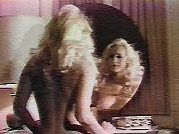
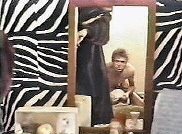


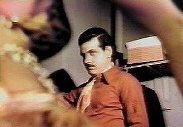

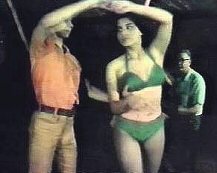
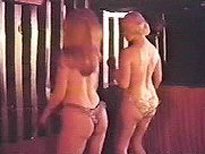
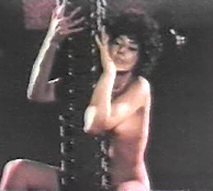
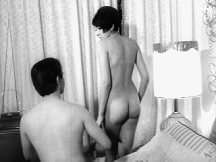
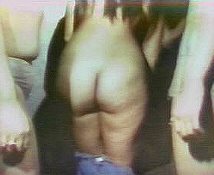
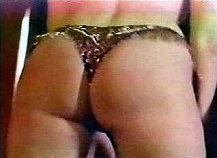

Page
created 20 December 2007 by D. Wilt. email dwiltNOSPAM@umd.edu
Back to The Films of
Glauco del Mar page
The Nuyorican
Films Page

